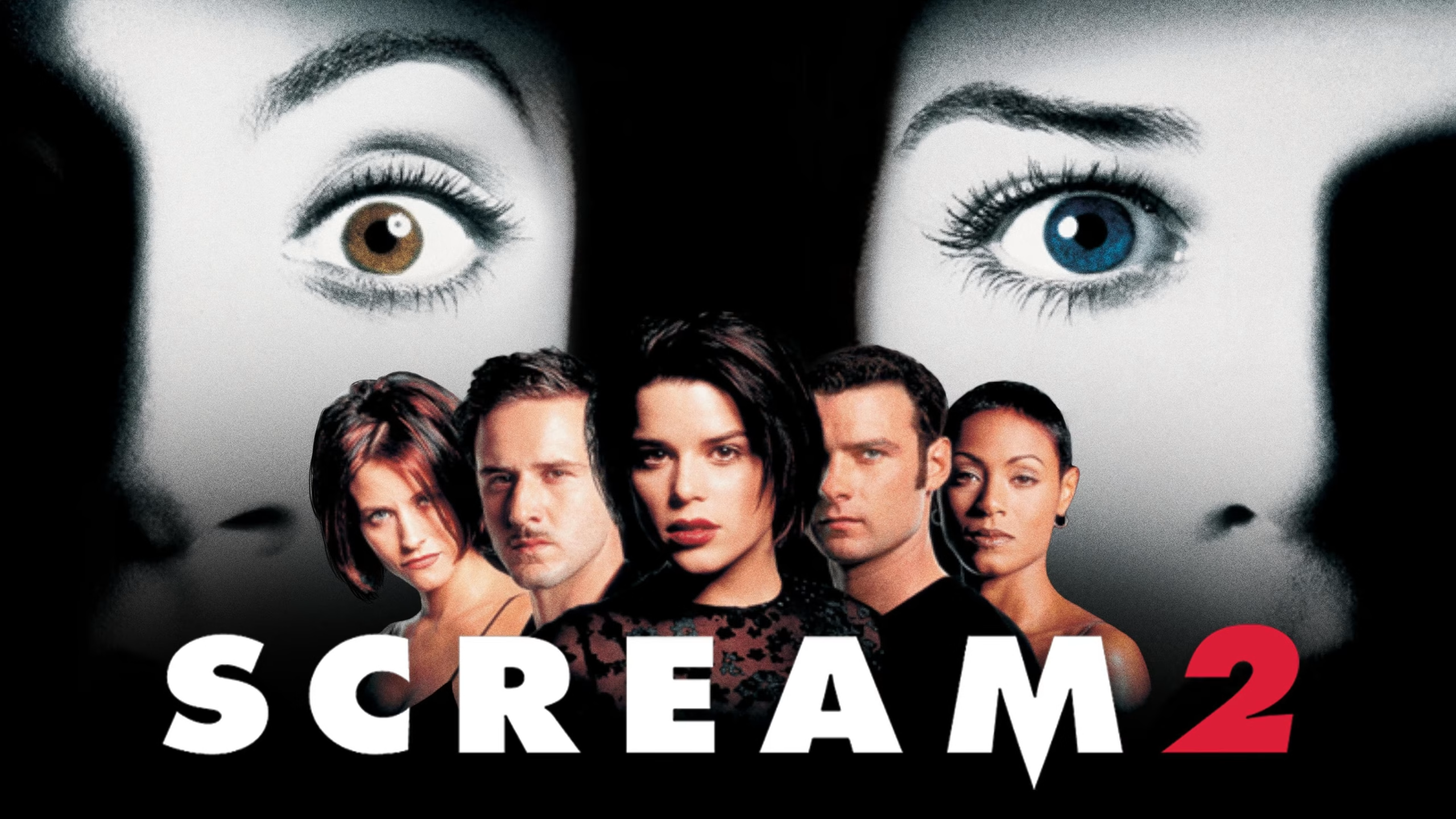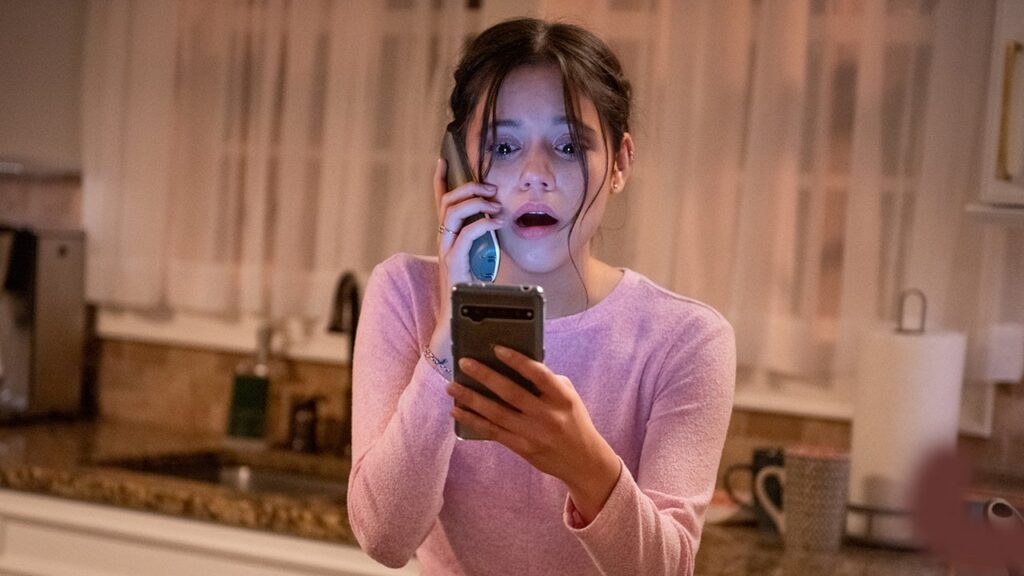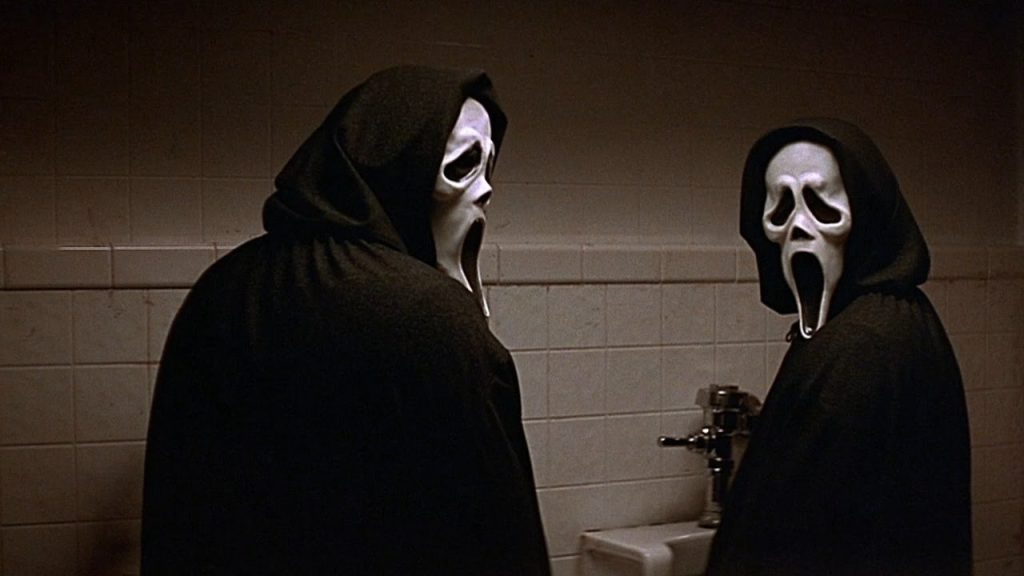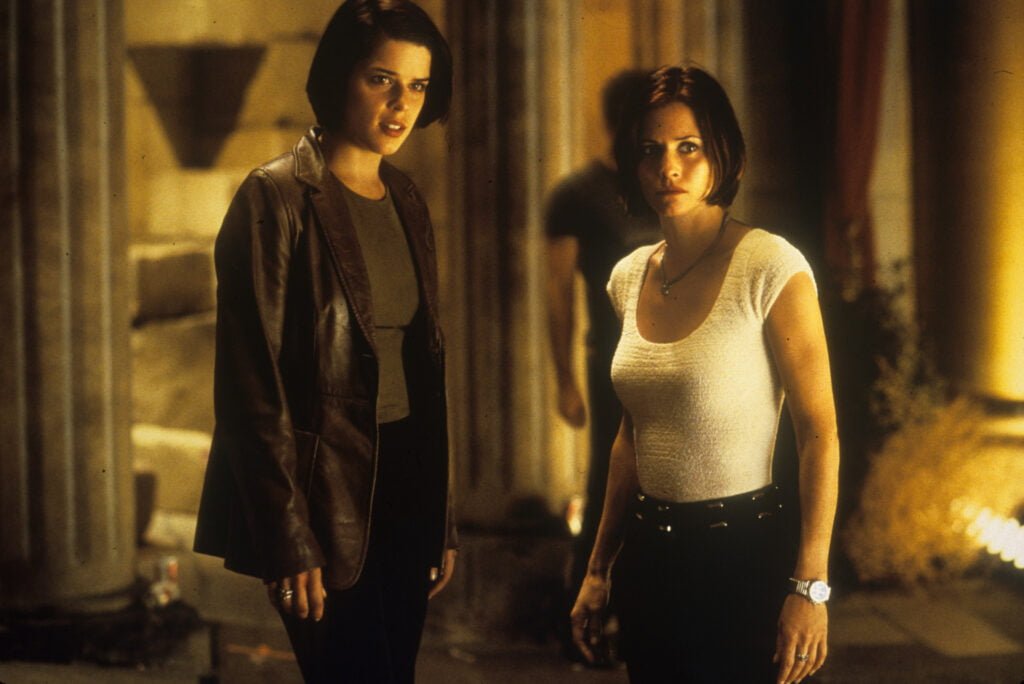Editorials
How Can Horror Help Us Cope with Tragedy?

Our world in 2022 is scary. There’s so much worldwide tragedy right now that some people wonder why on earth anyone would want to engage with horror content. But the horror genre is as popular as ever. Squid Game (2021) made a HUGE splash, and many Sandra Oh and horror fans alike are pumped about the release of Umma (2022) this past month. There’s a reason why horror helps us cope with tragedy, trauma, and disaster. However, there are important conditions horror must meet to be enjoyable and helpful for everyone.
Can Watching Horror Movies Help Us Cope With Tragedy?
There is a science to why people love horror, and benefit from consuming it. The thrill and excitement horror can cause produces natural opiates in the brain and spurs dopamine production. It’s hard-wired in our nervous systems for us to want another rush! But horror can only be enjoyable for the viewer if we feel safe. That’s when the combination of the fear reaction in the brain and the relief that the fear isn’t a true threat come together to produce a chemical concoction we keep wanting more of.
These chemicals help us escape the pains of our everyday lives. When we’re in that state of fear, our conscious, worrying brain turns off. I don’t know about you, but I don’t think about my student loan debt when I’m running through a haunted house.
When we watch horror with our friends, family, or partners, and we share that chemical experience that comes with the combination of fear and safety, it brings us together. We’re in a great mood because of the controlled fear, and we associate that feeling with the people we’re with.
The Science Behind Horror’s Thrill
Science also tells us that the sense of accomplishment we experience after watching a horror film makes us feel strong, and further connects us with those around us. It’s like we all went on a journey together and came out unscathed! What could be a better bonding exercise than that?
So of course horror is cathartic! It actually does something in our brains to help us cope in a healthy way.
But wait—it’s not that simple. Science isn’t the only factor here. The ideas perpetuated by the horror genre can range from fear-mongering to justice-oriented. This can make all the difference for marginalized people.
The Political Nature of Fear in Horror
There’s a lot at stake here. Horror has a huge impact on our society’s beliefs about fear and danger. It’s the genre that helps us determine what it is we’re scared of, what is threatening to our livelihood, and what we can do to stay safe. Fear is political. Controlling someone’s fear is a great way to change their behavior and shape how they see the world.
So, what do I mean by fear-mongering horror? It’s when the film presents a message aligned with the capitalist, racist ideology of our society. It places human beings in a hierarchy with a singular ideal at the top. Anyone who differs from the ideal, whether in race, sexuality, gender identity, social class, or physical ability, is deemed less than and seen as a threat. In these films, danger equals difference.
It’s no secret that the LGBTQIA+ community and people of color are historically underrepresented in horror, and doubly so when those identities intersect. When they are present, their characters are often reduced to stereotypical tropes like the black man lusting after and violating the white woman—like The Birth of a Nation (1915) and Candyman (1992)—and the male serial killer who dresses in women’s clothing—like Psycho (1960) and The Silence of the Lambs (1991). Other times, they’re simply there to be the victim of a gruesome murder that the pretty white girl watches in terror before escaping unscathed at the end of the film—like Scream 2 (1997) and Wrong Turn (2021).
Fear-Mongering Horror and Its Harmful Tropes
That fear-mongering message aligns with the real-life horrors faced by queer youth across the country. In Texas, Governor Greg Abbott sent a letter to Texas State Health Agencies claiming gender, citing medical procedures as “child abuse” and calling for doctors, nurses, and teachers to report any parents who help their kids receive this life-saving care to the Texas Department of Family and Protective Services. In Florida, the “Don’t Say Gay” bill sits on Governor DeSantis’ desk, waiting for his approval. The sentiment is spreading. Currently, there are fifteen proposals in nine states that discriminate against LGBTQIA+ students.
Contrary to public (predominantly white) opinion, racism and police brutality are ever-present threats to people of color in the U.S. Brianna Taylor’s family STILL has yet to receive the justice they deserve. Hate crimes against Asian Americans rose by an astounding 339% in 2021 due to scapegoating Chinese people for causing the COVID-19 pandemic. Queer and trans people of color are even more likely to face violence and are less likely to receive the help they need.
So how can horror help us cope when it’s othering us and propagating dangerous, hate-filled messages? Now more than ever, we need the horror genre to switch thematic gears. Instead of spreading fear-mongering rhetoric that hurts minorities, horror can be a tool for social justice and equity, as long as it portrays stories that humanize historically underrepresented people and critique the evils of our society.
The Rise of Justice-Oriented Horror
The best type of horror doesn’t see difference as a threat. Instead, justice-oriented horror portrays diversity as an asset. What the viewer is meant to fear in these films are the oppressive, violent systems that harm anyone who doesn’t fit the traditional American ideal: a white, straight, cis, able-bodied man. Danger equals systemic oppression.
Luckily, the shift towards justice-oriented horror is in full swing. Jordan Peele’s films Get Out (2017), and Us (2019), along with his modern-day twist on the 1950s sci-fi show The Twilight Zone (2019), are hugely influential in changing the face of horror. Jordan Peele is a HUGE deal in the horror industry. His films are some of the most popular modern horror films in existence. These aren’t little niche films. They’re box-office legends. Justice-oriented horror proves time and time again to be a hit. Peele’s films humanize black and other marginalized individuals and make it clear that the true evil of the story is white supremacy.
My favorite horror podcast is Nightmare Magazine’s podcast, edited by Wendy Wagner. Each week, they share a new horror story from their publication, read by award-winning voice actors and audiobook narrators. They only publish the best of the best, focusing on sharing justice-oriented horror stories with the world. They feature stories by a diverse set of horror authors like W.C. Dunlap, Maria Dahvana Headley, Seanan McGuire, and Caspian Gray.
Horror’s Role in Shaping Societal Beliefs
When horror movies highlight evil as society itself, marginalized people feel heard and are able to feel that chemical rush that creates a sense of catharsis. It allows us to take a step back and see the movie as fiction rather than a perpetuation of our very real traumas.
On a sociological level, this thematic shift in horror can shape the beliefs of our nation. As we continue the fight for justice and equity in our society, we need all of the help we can get to make it there. Because horror films are so directly connected to our society’s collective idea of what is scary, it is pertinent that these stories educate us about the very real dangers in our society instead of upholding traditional racist, homophobic, and transphobic ideology that serves only those clinging to hierarchical power.
ADDITIONAL VIEWING: Documentary Film, Horror Noire: A History of Black Horror (2019) on Shudder.
That’s why it’s so important that horror in the United States is finally turning away from the idea that otherness is evil, and instead embraces diversity and difference. It’s time for the dominant narrative to shift and present racism, sexism, and other systems of oppression as the true evil. That way, the horror genre can help more and more horror fans cope and find some enjoyment in this dark world.
*Special thanks to Lauren Zou, my intelligent, beautiful, horror-obsessed girlfriend, for helping me conceptualize and write this complex, sensitive article. I couldn’t have done it without you!
Editorials
‘The Woman in Black’ Remake Is Better Than The Original

As a horror fan, I tend to think about remakes a lot. Not why they are made, necessarily. That answer is pretty clear: money. But something closer to “if they have to be made, how can they be made well?” It’s rare to find a remake that is generally considered to be better than the original. However, there are plenty that have been deemed to be valuable in a different way. You can find these in basically all subgenres. Sci-fi, for instance (The Thing, The Blob). Zombies (Dawn of the Dead, Evil Dead). Even slashers (The Texas Chainsaw Massacre, My Bloody Valentine). However, when it comes to haunted house remakes, only The Woman in Black truly stands out, and it is shockingly underrated. Even more intriguingly, it is demonstrably better than the original movie.
The Original Haunted House Movie Is Almost Always Better
Now please note, I’m specifically talking about movies with haunted houses, rather than ghost movies in general. We wouldn’t want to be bringing The Ring into this conversation. That’s not fair to anyone.
Plenty of haunted house movies are minted classics, and as such, the subgenre has gotten its fair share of remakes. These are, almost unilaterally, some of the most-panned movies in a format that attracts bad reviews like honey attracts flies.
You’ve got 2005’s The Amityville Horror (a CGI-heavy slog briefly buoyed by a shirtless, possessed Ryan Reynolds). That same year’s Dark Water (one of many inert remakes of Asian horror films to come from that era). 1999’s The House on Haunted Hill (a manic, incoherent effort that millennial nostalgia has perhaps been too kind to). That same year there was The Haunting (a manic, incoherent effort that didn’t even earn nostalgia in the first place). And 2015’s Poltergeist (Remember this movie? Don’t you wish you didn’t?). And while I could accept arguments about 2001’s THIR13EN Ghosts, it’s hard to compete with a William Castle classic.
The Problem with Haunted House Remakes
Generally, I think haunted house remakes fail so often because of remakes’ compulsive obsession with updating the material. They throw in state-of-the-art special effects, the hottest stars of the era, and big set piece action sequences. Like, did House on Haunted Hill need to open with that weird roller coaster scene? Of course it didn’t.
However, when it comes to haunted house movies, bigger does not always mean better. They tend to be at their best when they are about ordinary people experiencing heightened versions of normal domestic fears. Bumps in the night, unexplained shadows, and the like. Maybe even some glowing eyes or a floating child. That’s all fine and dandy. But once you have a giant stone lion decapitating Owen Wilson, things have perhaps gone a bit off the rails.

The One Big Exception is The Woman in Black
The one undeniable exception to the haunted house remake rule is 2012’s The Woman in Black. If we want to split hairs, it’s technically the second adaptation of the Susan Hill novel of the same name. But The Haunting was technically a Shirley Jackson re-adaptation, and that still counts as a remake, so this does too.
The novel follows a young solicitor being haunted when handling a client’s estate at the secluded Eel Marsh House. The property was first adapted into a 1989 TV movie starring Adrian Rawlings, and it was ripe for a remake. In spite of having at least one majorly eerie scene, the 1989 movie is in fact too simple and small-scale. It is too invested in the humdrum realities of country life to have much time to be scary. Plus, it boasts a small screen budget and a distinctly “British television” sense of production design. Eel Marsh basically looks like any old English house, with whitewashed walls and a bland exterior.
Therefore, the “bigger is better” mentality of horror remakes took The Woman in Black to the exact level it needed.

The Woman in Black 2012 Makes Some Great Choices
2012’s The Woman in Black deserves an enormous amount of credit for carrying the remake mantle superbly well. By following a more sedate original, it reaches the exact pitch it needs in order to craft a perfect haunted house story. Most appropriately, the design of Eel Marsh House and its environs are gloriously excessive. While they don’t stretch the bounds of reality into sheer impossibility, they completely turn the original movie on its head.
Eel Marsh is now, as it should be, a decaying, rambling pile where every corner might hide deadly secrets. It’d be scary even if there wasn’t a ghost inside it, if only because it might contain copious black mold. Then you add the marshy grounds choked in horror movie fog. And then there’s the winding, muddy road that gets lost in the tide and feels downright purgatorial. Finally, you have a proper damn setting for a haunted house movie that plumbs the wicked secrets of the wealthy.
Why The Woman in Black Remake Is an Underrated Horror Gem
While 2012’s The Woman in Black is certainly underrated as a remake, I think it is even more underrated as a haunted house movie. For one thing, it is one of the best examples of the pre-Conjuring jump-scare horror movie done right. And if you’ve read my work for any amount of time, you know how positively I feel about jump scares. The Woman in Black offers a delectable combo platter of shocks designed to keep you on your toes. For example, there are plenty of patient shots that wait for you to notice the creepy thing in the background. But there are also a number of short sharp shocks that remain tremendously effective.
That is not to say that the movie is perfect. They did slightly overstep with their “bigger is better” move to cast Daniel Radcliffe in the lead role. It was a big swing making his first post-Potter role that of a single father with a four-year-old kid. It’s a bit much to have asked 2012 audiences to swallow, though it reads slightly better so many years later.
However, despite its flaws, The Woman in Black remake is demonstrably better than the original. In nearly every conceivable way. It’s pure Hammer Films confection, as opposed to a television drama without an ounce of oomph.
Editorials
Is ‘Scream 2’ Still the Worst of the Series?

There are only so many times I can get away with burying the lede with an editorial headline before someone throws a rock at me. It may or may not be justified when they do. This article is not an attempt at ragebaiting Scream fans, I promise. Neither was my Scream 3 article, which I’m still completely right about.
I do firmly believe that Scream 2 is, at the very least, the last Scream film I’d want to watch. But what was initially just me complaining about a film that I disregard as the weakest entry in its series has since developed into trying to address what it does right. You’ve heard of the expression “jack of all trades, master of none”, and to me Scream 2 really was the jack of all trades of the franchise for the longest time.
It technically has everything a Scream movie needs. Its opening is great, but it’s not the best of them by a long shot. Its killers are unexpected, but not particularly interesting, feeling flat and one-dimensional compared to the others. It has kills, but only a few of them are particularly shocking or well executed. It pokes fun at the genre but doesn’t say anything particularly bold in terms of commentary. Having everything a Scream movie needs is the bare minimum to me.
But the question is, what does Scream 2 do best exactly? Finding that answer involves highlighting what each of the other sequels are great at, and trying to pick out what Scream 2 has that the others don’t.

Scream 3 Is the Big Finale That Utilizes Its Setting Perfectly
Scream as a series handily dodges the trap most horror franchises fall into: rehashing and retreading the same territory over and over. That’s because every one of its films are in essence trying to do something a little different and a little bolder.
Scream 3 is especially bold because it was conceived, written, and executed as the final installment in the Scream series. And it does that incredibly well. Taking the action away from a locale similar to Woodsboro, Scream 3 tosses our characters into the frying pan of a Hollywood film production. Despite its notorious number of rewrites and script changes (one of which resulted in our first solo Ghostface), it still manages to be a perfect culmination of Sidney Prescott’s story.
I won’t repeat myself too much (go read my previous article on the subject), but 3 is often maligned for as good a film as it turned out to be. And for all of its clunkier reveals, and its ghost mom antics, it understands how to utilize its setting and send its characters off into the sunset right.
Scream 4’s Meta Commentary Wakes Scream from a Deep Sleep
As Wes Craven’s final film, Scream 4 has a very special place in the franchise. It was and still is largely adored for bringing back the franchise from a deep 11-year sleep. With one of the craziest openings in any horror film, let alone a Scream film, it sets the tone for a bombastic return and pays off in spades with the journey it takes us on.
Its primary Ghostface Jill Roberts is a fan favorite, and for some people, she is the best to ever wear the mask. Its script is the source of many memorable moments, not the least of which is Kirby’s iconic rapid-fire response to the horror remakes question. And most importantly, it makes a bold and surprisingly effective return for our main trio of Sidney, Dewey, and Gale, whose return didn’t feel trite or hammy when they ended up coming back to Woodsboro for more.
Craven’s work on 4 truly understands the power its predecessors had exerted on the horror genre, both irreverent in its metacommentary and celebratory of the Scream series as a whole. The film is less of a love letter to the genre and more of a kicking down of the door to remind people what Scream is about. 4’s story re-established that Scream isn’t going away, no matter how long it takes for another film, and no matter how many franchises try to take its place.

Scream 5 & 6 Is Radio Silence’s Brutal and Bloody Attitude Era
Put simply, Scream 5 and 6’s strong suit was not its characters. It was not its clever writing. The Radio Silence duology in the Scream series excelled in one thing: beating the hell out of its characters.
Wrestling fans (of which there is an unsurprising amount of crossover with horror fans) will know why I call it the Attitude Era. Just like WWE’s most infamous stretch of history, Radio Silence brought something especially aggressive to their entries. And it’s because these films were just brutal. Handing the reins to the series, Bettinelli-Olpin and Gillet gifted a special kineticism to the classic Scream chase sequences, insane finales, and especially its ruthless killers.
All five of the Ghostfaces present in 5 and 6 are the definition of nasty. They’re unrelenting, and in my humble opinion, the freakiest since the original duo of Stu Macher and Billy Loomis. Getting to hear all the air get sucked out of the room as Dewey is gutted like a fish in 5 was still an incredible moment to experience in theatres, and it’s something I don’t think would have happened if the films were any less mean and any less explosively violent.

So, What Does Scream 2 Do Best Exactly?
So now, after looking at all these entries and all of their greatest qualities, what does Scream 2 have that none of the others do? What must I concede to Scream 2?
Really great character development.
Film is a medium of spectacle most of the time, and this is reflected in how we critique and compliment them. It affects how we look back on them, sometimes treating them more harshly than they deserve because they don’t have that visual flash. But for every ounce of spectacle Scream 2 lacks, I have to admit, it does an incredible job of developing Sidney Prescott as a character.
On a rare rewatch, it’s clear Neve Campbell is carrying the entirety of Scream 2 on her back just because of how compelling she makes Sidney. Watching her slowly fight against a tide of paranoia, fear, and distrust of the people around her once more, watching her be plunged back into the nightmare, is undeniably effective.
It’s also where Dewey and Gale are really cemented as a couple, and where the seeds of them always returning to each other are planted. Going from a mutual simmering disrespect to an affectionate couple to inseparable but awkward and in love is just classic; two people who complete each other in how different they are, but are inevitably pulled back and forth by those differences, their bond is one of the major highlights throughout the series.

Maybe All the Scream Films Are Just Good?
These three characters are the heart of the series, long after they’ve been written out. I talk a big game about how Scream 3 is the perfect ending for the franchise, but I like to gloss over the fact that Scream 2 does a lot of the legwork when it comes to developing the characters of Dewey, Gale, and especially Sidney.
Without 2, 3 just isn’t that effective when it comes to giving Sidney her long deserved peace. Without 2, the way we see Sidney’s return in 4 & 5 doesn’t hit as hard. All of the Scream movies owe something to Scream 2 in the same way they owe something to the original Scream. I think I’ve come to a new point of view when it comes to the Scream franchise: maybe there is no bad entry. Maybe none of them have to be the worst. Each one interlinks with the others in their own unique way.
And even though I doubt I will ever really love Scream 2, it has an undeniable strength in its character writing that permeates throughout the whole franchise. And that at the very least keeps it from being the worst Scream film.























